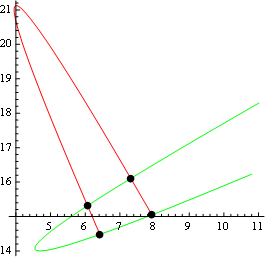I have been looking through other parametric equations questions and am still unsure where to start with this one. I am given two functions:
f[t_] = {16.2 - 7 t + t^2, 13 t - 2 t^2};
g[t_] = {26 - 13.1 t + 2 t^2, 23 - 6 t + t^2};
How do I show where these two parametric paths cross? How would I simplify these two sets? Thank you!




